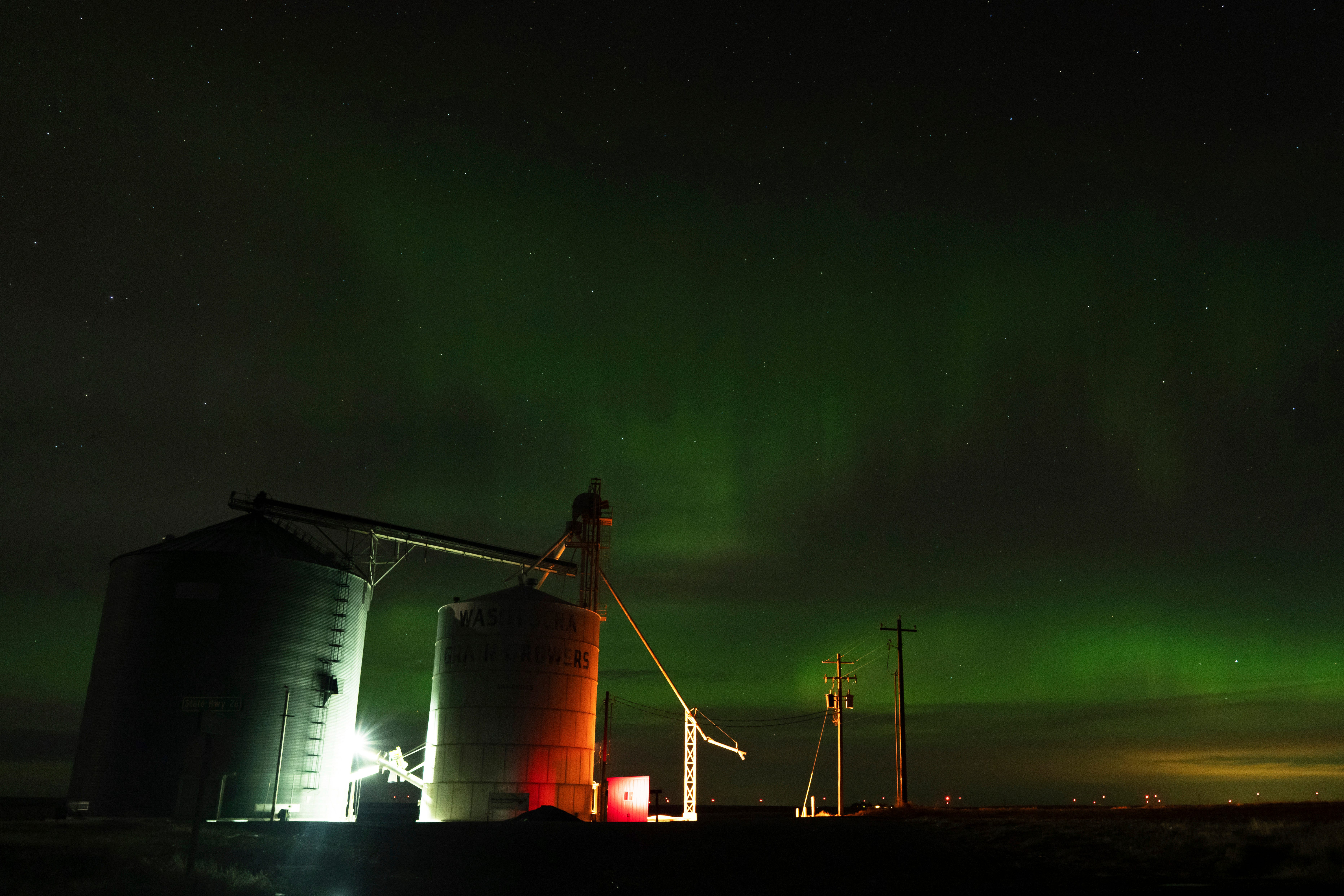
If seeing the northern lights is on your bucket list, you might just be in luck. The northern lights, also known as the aurora borealis, could appear over 16 U.S. states next Thursday, July 13.
The natural phenomenon is usually caused by solar winds coming from the sun and Earth’s magnetic field, according to the NOAA Space Weather Prediction Center.
“Aurora is the name given to the glow or light produced when electrons from space flow down Earth’s magnetic field and collide with atoms and molecules of the upper atmosphere in a ring or oval centered on the magnetic pole of Earth,” the website states. “The collisions produce light much like how electrons flowing through gas in a neon light collide with neon and other gasses to produce different colored light bulbs.”
The University of Alaska Fairbanks Geophysical Institute is forecasting auroral activity to be high(+) next Thursday, with highly active light displays being visible in parts of Canada and the U.S.
Here’s where you could possibly see the northern lights next week.
Want to see the northern lights?Good news: Experts predict years of awesome aurora viewing.
Where could the northern lights appear?
The northern lights could be visible in northern parts of 16 states if the weather is clear.
“Auroral activity will be high(+). Weather permitting, highly active auroral displays will be visible overhead from Inuvik, Yellowknife, Rankin and Iqaluit to Vancouver, Helena, Minneapolis, Milwaukee, Bay City, Toronto, Montpelier, and Charlottetown, and visible low on the horizon from Salem, Boise, Cheyenne, Lincoln, Indianapolis and Annapolis,” the University of Alaska Fairbanks Geophysical Institute’s forecast stated.
Here’s where you could possibly see northern lights on July 13:
- Alaska
- Montana
- North Dakota
- South Dakota
- Minnesota
- Wisconsin
- Michigan
- Maryland
- New York
- New Hampshire
- Washington
- Vermont
- Idaho
- Massachusetts
- Wyoming
- Indiana
When will northern lights appear in the sky?
The best chance of viewing the aurora borealis is between 10 p.m. and 2 a.m. local time, the NOAA Space Weather Prediction Center states. People interested in viewing should get away from city lights and light pollution for a better chance at seeing them.
The higher the geomagnetic activity, the brighter the aurora is. As July 13 gets closer, the NOAA will monitor the activity and release a forecast of its own.
When was the last major northern light event in the U.S.?
The possibility of seeing the northern lights comes after a geomagnetic storm created lights that shone above 30 U.S. states late April. Lights appeared in parts of Iowa, North Dakota, Kansas and more.
More on weather:‘Unfamiliar world’: Heat hit a global record 3 times this week — more records could fall
Kate Perez covers breaking and trending news for USA TODAY. You can reach her at kperez@gannett.com or on Twitter @katecperez_.